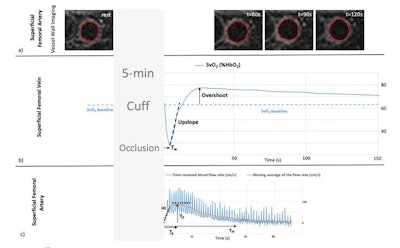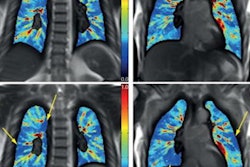MRI shows that vaping has immediate negative effects on vascular function, according to research to be presented at the upcoming RSNA meeting.
Marianne Nabbout, MD, from the University of Arkansas in Little Rock will discuss results from her team’s study, which showed that even without nicotine, cigarettes and e-cigarettes have immediate acute effects, including decreased resting blood flow velocity and venous oxygen saturation.
“This study serves to highlight the acute effects smoking and vaping can have on a multitude of vascular beds in the human body,” Nabbout said in a statement released by the RSNA. “If the acute consumption of an e-cigarette can have an effect that is immediately manifested at the level of the vessels, it is conceivable that the chronic use can cause vascular disease.”
E-cigarettes have been described by proponents and users as being less harmful than tobacco. While e-cigarettes contain less chemicals than traditional cigarettes, previous reports indicate that the former still has its share of negative health impacts.
Nabbout and colleagues investigated the acute effects of cigarette and e-cigarette smoking on vascular function, both with and without tobacco.
The double-blinded study included 31 healthy tobacco smokers and vapers ranging in age from 21 to 49 years. The participants underwent two MRI exams, one before and one after each of the following events: tobacco cigarette smoking, vaping e-cigarette aerosol with nicotine, and vaping e-cigarette aerosol without nicotine.
 Cuff occlusion paradigm shows the following: (a) Cross-sectional images of the femoral artery that were used to draw regions of interest before (rest) and after cuff occlusion (at three different time points) to determine flow mediated dilation; (b) Femoral vein oxygen saturation (SvO2) plotted vs time after cuff release. SvO2 is derived from the difference between venous and arterial signal phase. (Tw = washout time); and (c) Average blood flow velocity-time curve in the femoral artery. (HI = hyperemic index; Vp = peak velocity; Tp = time to peak velocity; TFF = time of forward flow)RSNA
Cuff occlusion paradigm shows the following: (a) Cross-sectional images of the femoral artery that were used to draw regions of interest before (rest) and after cuff occlusion (at three different time points) to determine flow mediated dilation; (b) Femoral vein oxygen saturation (SvO2) plotted vs time after cuff release. SvO2 is derived from the difference between venous and arterial signal phase. (Tw = washout time); and (c) Average blood flow velocity-time curve in the femoral artery. (HI = hyperemic index; Vp = peak velocity; Tp = time to peak velocity; TFF = time of forward flow)RSNA
The researchers placed a cuff on the upper thigh of all participants to restrict blood flow. And to measure blood flow in the brain, they used phase-contrast MRI.
To compare results, the researchers also included baseline MRI scans of 10 nonsmokers and nonvapers ranging from 21 to 33 years old.
The team found significant decreases in the superficial femoral artery baseline velocity and time of forward flow following inhalation of all smoking and vaping methods (p < 0.05 for both). This suggests weakened vascular reactivity, it added.
Also, baseline venous oxygen saturation decreased at the femoral vein following inhalation (p = 0.01).
Finally, neurovascular coupling and flow-mediated dilation, two biomarkers in vascular function, differed between smokers/vapers to nonsmokers/nonvapers. This included an increase in neurovascular coupling (+37%; p < 0.005) and a decrease in flow-mediated dilation (-42%; p < 0.05) for smokers/vapers.
Nabbout said that with these results in mind, avoiding smoking and vaping is "always recommended" and that science is being relied upon to guide regulation of cigarettes and e-cigarettes.







